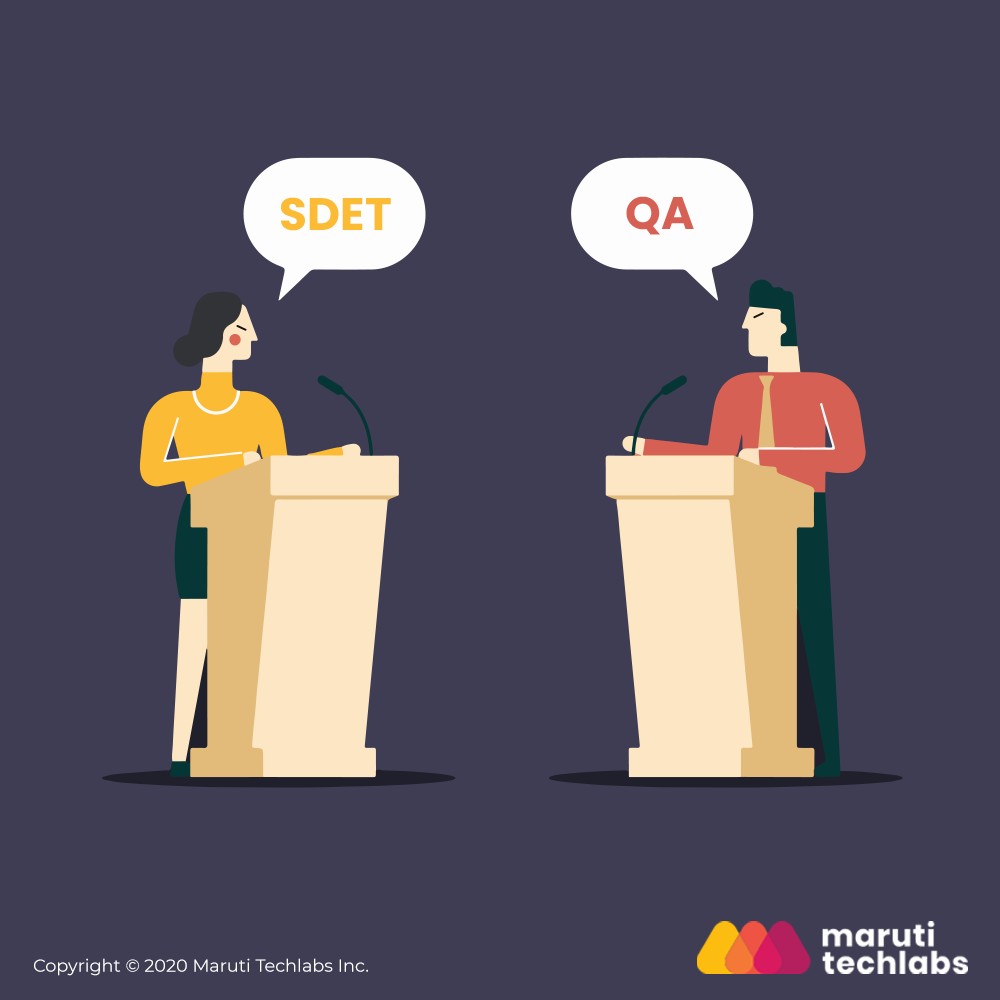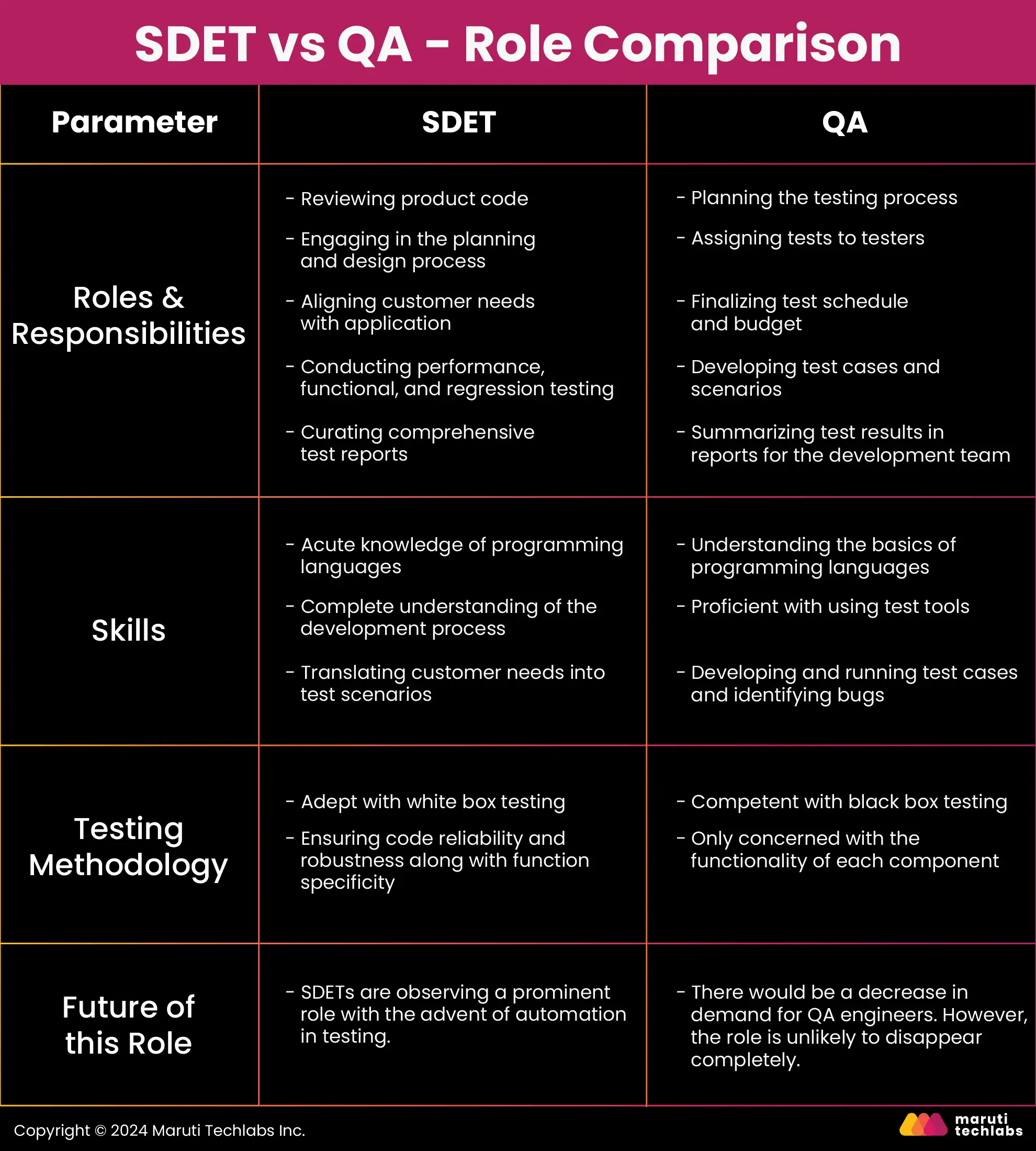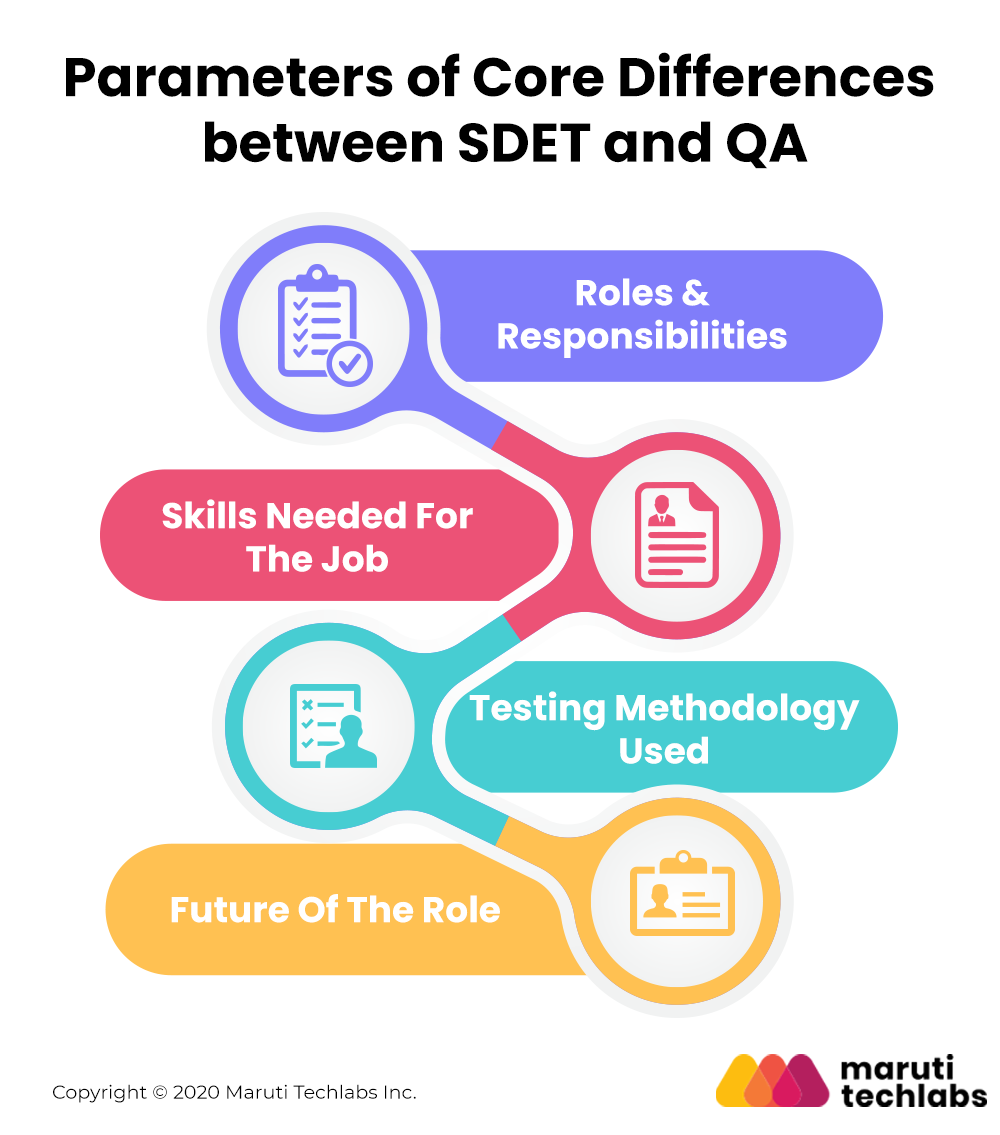

SDET vs QA - A Comprehensive Guide To The Key Differences (2025)






What is SDET (Software Development Engineer in Test)? What is the difference between SDET and QA? Do you really need a Software Development Engineer in Test? Let’s discuss and find the answers to these questions.

“Quality is never an accident; it is always the result of intelligent effort.” – John Ruskin.
And testers contribute largely to this effort in ensuring quality in the software development space.
From putting it last in priority list to making it a key component of software development, people have realized that software testing is a crucial and decisive stage in the software development life cycle. Resultantly, testing methodologies have undergone changes over time.
The changing testing methodologies have also led to a change in the role of testers. A Quality Assurance Engineer or QA Engineer is a traditional testing role. A new addition to the testing roles is Software Development Engineer in Test or SDET. It is a relatively new role that still leaves many confused and wondering.
Here we discuss the need and rise of SDET in testing, what is SDET and how it is different from QA.
The SDET meaning refers to a Software Development Engineer in Test, which is a role that combines the skills of a developer and a test engineer. An SDET is involved in the project right from its planning stage and plays a key role in automating the testing process. In essence, an SDET is a developer with an eye for testing.
Whereas, a QA Engineer is someone who has complete knowledge of various testing processes and methodologies. They should also be well-versed in data management, bug reporting, troubleshooting and test environments.
The SDET meaning and the role of QA Engineer should now give you a clearer distinction between SDET vs QA. To dive deeper into the differences, let's explore the skills and responsibilities that set an SDET apart from a traditional QA engineer.

The responsibilities of a QA engineer are as follows:
The roles and responsibilities of an SDET involve the following:
As you can see, the SDET is mainly responsible for automating tests and delivering a high-quality, reliable and scalable product by engaging in the development process from the beginning. In comparison, the QA is purely responsible for the testing and does not take part in the planning and design phases.
The difference in the roles and responsibilities of both positions translates into a difference in the skills needed for the job as well. A QA should be well-versed in the use of test tools such as Selenium, developing and running test cases and creating and tracking bugs. A QA engineer only needs basic programming knowledge.
In contrast, a software development engineer in test should be well-versed in various programming languages and should be able to understand the development process. They should also be able to translate customer requirements into test scenarios.
Since SDETs have to work with developers, testers and clients, communication and leadership skills are equally important for the job. SDETs need to have excellent people skills to effectively collaborate with various teams.

The QA engineer performs black-box testing. They are only concerned about the functionality of each component. The internal code is not of concern. However, an SDET needs to perform white box testing. They need to ensure that not only is the component functioning as per specifications, its code is also reliable and robust.
The responsibilities of an SDET are greater than those of a QA engineer. In addition to this, a software engineer in test should have knowledge of various programming languages as well as testing tools. Given these conditions, it is understandable that the average income of an SDET is higher than that of a QA engineer.
With the advent of automation in testing, manual testing has become redundant and is on its way out. The top software companies, such as Google and Facebook, have already done away with the role of QA engineers. Going by the word of these industry leaders and CaaS providers, SDETs are the future.
If you are a QA engineer right now, then this is the time to upskill yourself. Learn new languages and try your hand at automating tests. The role of the traditional QA engineer is unlikely to disappear completely. However, we might see a shift towards SDETs taking on a more prominent role. These individuals possess the skills of both developers and testers, allowing them to offer quality engineering and assurance services throughout the development cycle.
This is the era of automation. SDETs take the testing to the next level by improving the code quality along with making the product bug free. The software industry is moving towards automated testing for functionality, security and performance of the product.
SDETs play a crucial role in this process. With their superior skill set and knowledge of various testing tools and programming languages, test development engineers are key to ensuring that the client gets a high-quality, bug-free, reliable, scalable and robust product.
Many industries rely on SDETs to make sure their software runs smoothly and securely.
The software development engineer in test has various responsibilities that impact the final product. It is a complex role that requires dedication. Wondering how to be the best SDET there is? Here are a few tips to guide you.
If your business handles large-scale testing, manual testing can quickly become impractical. SDETs enhance the process by automating tests and ensuring faster and more efficient results. They also help cut costs by reducing the need for manual testers, designing automation scripts, and reviewing source code to optimize testing efforts. Additionally, if your CI/CD pipelines face challenges, an SDET can develop strategies to improve test coverage and maintain smooth deployment processes. With expertise in development, testing, and QA, they play a key role in building reliable software.
Many factors like location, employer, and experience can affect the salary of SDET and QA. For instance, an SDET working for Apple can earn $120,000 or more yearly. In comparison, someone in the same role working for a smaller company can earn between $40,000 to $120,000. A QA's yearly salary can range between $40,000 to $100,000. Generally, SDETs are paid 30-40% higher than manual testers due to the range of skills and experience they possess.
The software development process has changed drastically over the last decade, and these changes reflect on the testing as well. SDETs are an outcome of this change. By incorporating the testing into the development process, SDETs have the power to make the product exceptional.
Our proficient SDETs are well-versed with the latest tools and technologies. We, at Maruti Techlabs, have helped many companies ensure unmatched performance with our all-rounding testing services.
For accurate and exceptional testing services, Maruti Techlabs is your one-stop solution. Get in touch with us here.
SDETs have emerged as crucial assets for enterprises. Their software development expertise, clubbed with testing acumen, bridges the gap between QA teams and developers and assists with developing reliable, robust, and operational software.
Here are the core differences between the tools used by SDETs and QAs.
The tools used by SDETs can be classified as follows:
The core QA testing tools can be categorized into 3 main categories.
A QA automation engineer can create and code automated test case suites for existing or new software. They play a vital role in operations during software development, reducing the number of manual tests.
However, an SDET possesses developer, tester, and DevOps skills. SDETs are involved in the entire software release cycle, from low-level unit tests to essential test planning. They master the analytical skills of a QA analyst with added technical expertise.
Collaborating effectively, SDETs and QA professionals can significantly enhance software quality. SDETs are adept programmers who leverage this knowledge to design and create manual and automated tests. QA testers execute these cases, offering their expertise in manual testing, exploratory testing, and bug reporting.
SDETs face numerous challenges that require them to be adept at coding, testing, and mastering the latest software development practices. These include proficiency in development and testing, adapting to new technologies, and conducting end-to-end testing while employing automated tests within CI/CD pipelines.


